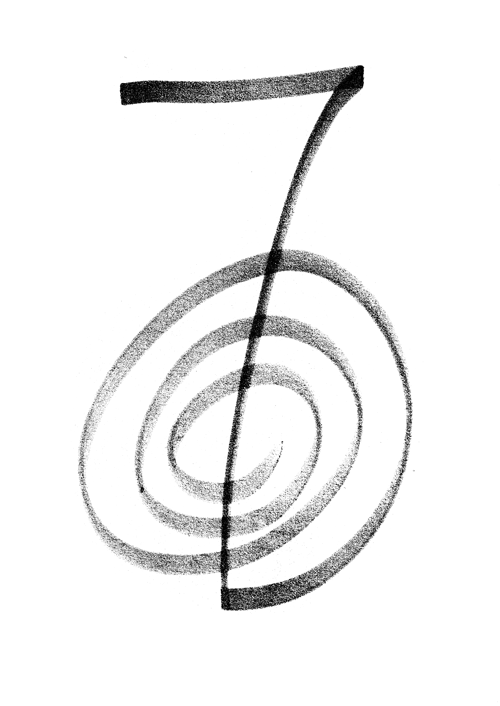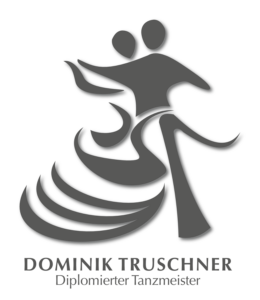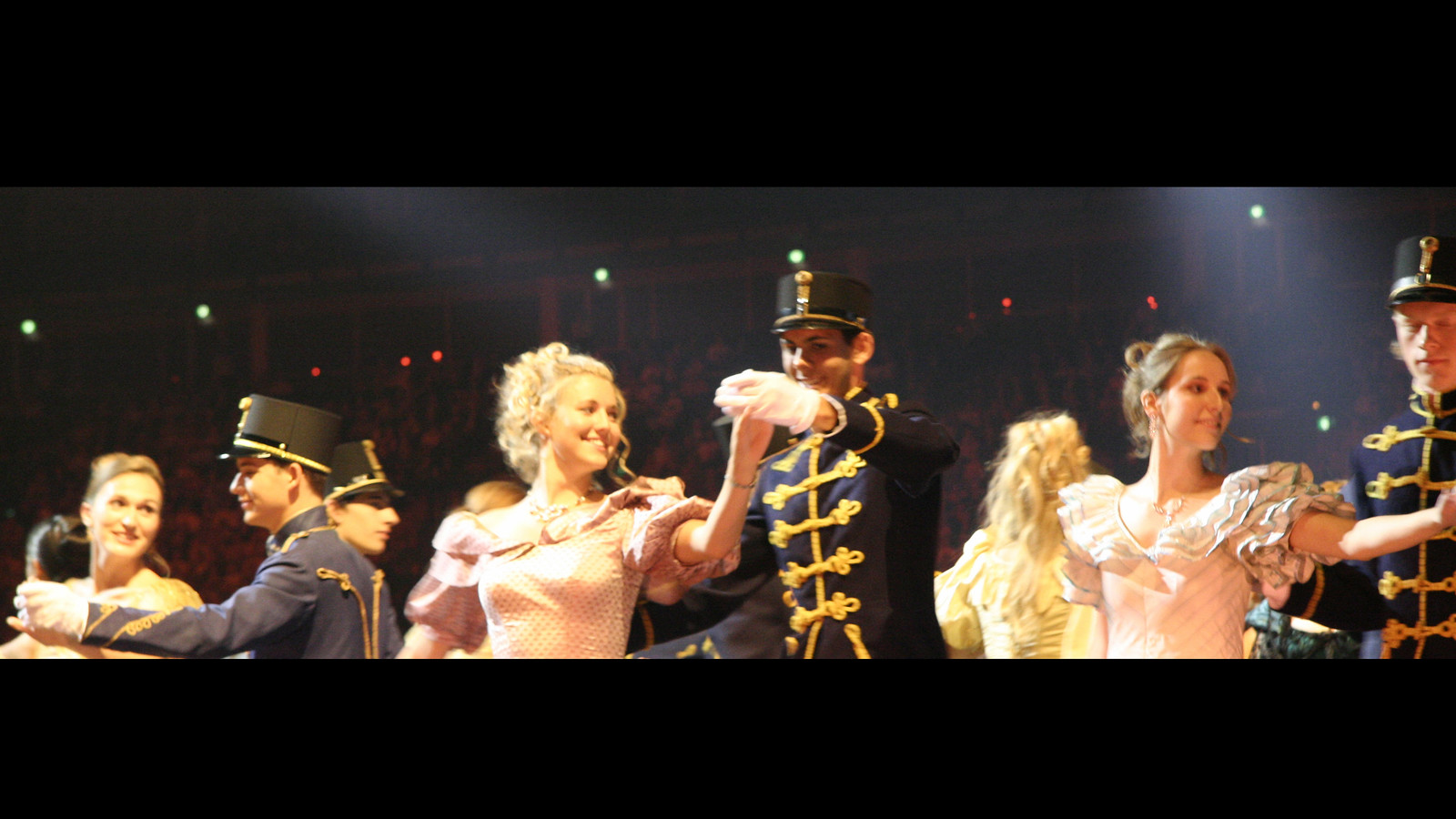Geschichte
Photo: Wikipedia
As the name implies, a quadrille once consisted of four couples in a square (Carré). For better understanding, the moderncolumn lineup has now become established. So we can now bring as many couples as possible on the dance floor.
A quadrille evolved from the English Countrydanses to the French Contredanses, so called Counter dances. This is definitely visible by the line up and placement of the dancers and of course the figures. In a square (carré), couples 1 and 3 and couples 2 and 4 always danced together or against each other.
At first there were many variants of a quadrille, so in Austria the so-called Quadrille français (Attention: in French Quadrille is male - so Le Quadrille!) became the most popular. Although we occasionally use the quadrille à la Cour - the so-called Lanciers - in opening ceremonies of a ball, we still believe in our quadrille with the six tours Pantalon, Été, La Poule, La Trénis, La Pastourelle and Finale.

Quadrille français: The highlight at a typical Viennese ball, at weddings or incentives.
Grundlegendes
Line-Up
Getanzt wird paarweise. Die Dame steht rechts neben dem Herren. Zwei Paare stehen sich gegenüber. Die Paare bilden sog. Kolonnen, die sich gegenüberstehen, längs zum Saal.
Counting
Jede (angesagte) Figur wird jeweils mit 8 Taktschlägen getanzt. D.h., dass wir bei jeder Figur von 1-8 zählen und somit jeweils maximal 8 Schritte benötigen
Music
The most famous is the Fledermaus Quadrille, Op. 363 von Johann Strauss Sohn. Sie steht auch im Standard-Repertoire der großen Wiener Ballorchester. Zu meinen bisherigen angesagten und unterrichteten Quadrillen gehören auch Adaptierungen (d.h. an die Choreographie der Fledermausquadrille angepasste) anderer bekannter Werke der Strauss-Familie. Dazu zählen u.a.
- die Carmen Quadrille (Op. 134 – Eduard Strauss),
- die Zigeunerbaron-Quadrille (Op. 422 – Johann Strauss Sohn),
- die Orpheus-Quadrille (Op. 236 – Johann Strauss Sohn),
- die Maskenball-Quadrille (Op. 272 – Johann Strauss Sohn),
- die Schützen-Quadrille (Eduard, Josef und Johann Strauss).
Auch andere Werke wurden von mir bereits an die Choreographie der Fledermausquadrille angepasst und z.B. mit Polka- und Marschmusik zu einer besonderen Folk Music Quadrille was compiled by me.
Particularities
- Prinzipiell beginnt bei 1 immer der right foot.
- For all those who want to be very specific, here are the three exceptions where the left foot begins:
-
- Right in the 1. Tour all Ladies start left to their first Compliment.
- jedes Mal, wenn der Herr die Dame bei einer Damenkette auf 4 in Empfang nimmt, geht er ihr mit dem linken Fuß und der linken Hand entgegen (1., 4. und 6. Tour ).
- At the 5. Tour both lady and gentleman start left when going the circle ending at the opposite place.
- Es gäbe außerdem einen eigenen klassischen “Quadrille-Schritt” mit “Wechselschritt-Schritt-Schritt” (gezählt: 1&2, 3, 4 bzw. 5&6, 7, 8), den man vor allem bei Figuren tanzen kann, die zur Mitte vor und davon zurück ausgeführt werden.

Die 6 Touren
1. Tour – Pantalon
- 1-2 turn to the own partner
3-4 Curtsey/Bow
5-6 up
7-8 turn back to basic line-up - 1-2 Sidestep to right
3-4 Curtsey/Bow
5-6 up
7-8 Sidestep to left, back to basic line-up - 1-8 Chaîne anglaise (Change of place all couples)
- 1-8 Chaîne anglaise (Change of place all couples to their own place) ending facing the own partner
- 1-8 Grand Balancé (diagonally four steps forward and back, right hand side)
- 1-8 Tour de Main (right in right hand, circular forward steps)
- 1-8 Chaîne des Dames (change of place ladies only) to the opposite place
- 1-8 Chaîne des Dames (change of place ladies only) to own partner ending left in left hand (shadow-position)
- 1-8 Promenade (Change of place all couples)
- 1-8 Chaîne anglaise (Change of place all couples to their own place)
2. Tour – Été
Division into "First and Second Ladies" and "First and Second Men"
1-16 (=8 bars) prelude
Only first ladies and opposite the first gentlemen start to dance.
- 1-8 four steps forward to center and back
- 1-8 diagonally four steps forward to center and back, right hand side
- 1-8 Traversé (Change of place, passing the other one on the left)
- 1-8 diagonally four steps forward to center and back, right hand side
- 1-8 Traversé (Change of place, passing the other one on the left) ending facing the own partner
- 1-8 Tour de main (right in right hand with the own partner, circular forward steps)
Repeat all figures now with th second ladies and the second gentlemen dancing and the first dancers looking on.
3. Tour – La Poule
Division into "First and Second Ladies" and "First and Second Men"
1-16 (=8 bars) prelude
Only first ladies and opposite the first gentlemen start to dance.
- 1-8 Traversé (Change of place, passing the other one on the left)
- 1-8 "To center, left“ (Forward to center, left in left hand, own partner stand by, right in right hand)
- 1-8 Petit Balancé ([1,2] right foot sidestep, left foot across "Tap" - [3,4] left foot sidestep, right foot across "Tap" - [5,6] right foot sidestep, left foot across "Tap" - [7,8] left foot sidestep, right foot across "Tap")
- 1-8 All couples quickly to the opposite place
- 1-8 The first ones four steps forward to center and back
- 1-8 The first ones diagonally four steps forward to center and back, right hand side
- 1-8 All couples four steps forward to center and back
- 1-8 Chaine anglaise (Change of place all couples to the own place)
Repeat all figures now with th second ladies and the second gentlemen dancing and the first dancers looking on.
4. Tour – La Trénis
Division into "First and Second Couples"
(First couples are those with the first ladies.)
1-16 (=8 bars) prelude
Only first couples start to dance.
- 1-8 couples four steps forward to center and back
- 1-8 first couples four steps forward to center, gentlemen go back [5-8] while ladies go to the opposite place, turn and take the other lady’s hand
- 1-8 Damentor – all gentlemen underneath the ladie’s hands to the opposite place
- 1-8 Traversé to the own place, passing the other one on the left, ending facing the own partner
- 1-8 Grand Balancé (diagonally four steps forward and back, right hand side)
- 1-8 Tour de main (right in right hand with the own partner, circular forward steps)
Repeat now all figures with the second couples beginning.
5. Tour – La Pastourelle
Division into "First and Second Couples"
(First couples are those with the first ladies.)
1-16 (=8 bars) prelude
Only first couples start to dance.
- 1-8 couples four steps forward to center and back
- 1-8 first couples four steps forward to center, ladies go back [5-8] while gentlemen go to the opposite place right side of the opposite couple.
Der Herr stellt sich nun rechts der fremden Dame auf. Bildung der “Dreiergruppe”. - 1-16 Present all ladies (Triplets now two times four steps forward to center and back)
- 1-8 Ladies solo (four steps forward to center and back)
(four steps forward to center [1-4], four small steps back [5-8]) - 1-8 Build foursome group (in circle)
(lady four steps forward to center an reaches hands aof both gentlemen[1-4], Curtsey/Bow to the own partner [5-8]) - 1-8 All couples in circle eight steps to the opposite place (gentlemen leading)
- 1-8 Chaine anglaise (Change of place all couples to the own place)
Repeat now all figures with the second couples beginning.
6. Tour – Finale
1-16 (=8 bars) prelude
Reach hands throughout the "column".
- 1-16 Colums two times four steps forward to center and back,
ending arm linked with the own partner. - „Double-Été“
- 1-8 couples four steps forward to center and back
- 1-8 all couples (linked arms) diagonally four steps forward to center and back
- 1-8 Traversé (all couples (linked arms) change of place, passing the other one on the left, gentleman leading)
- 1-8 all couples (linked arms) diagonally four steps forward to center and back
- 1-8 Traversé (all couples (linked arms) change of place, passing the other one on the left, gentleman leading) bck to the own place, ending facing the own partner
- 1-8 Tour de main (right in right hand with the own partner, circular forward steps)
- 1-16 Colums two times four steps forward to center and back,
ending in shadow-position (left in left hand ) - "Saint-Simonienne"
- 1-8 all couples (left in left hand) four steps forward to center and back
- 1-8 all couples (left in left hand) four steps forward to center [1-3], change ladies [4] and back [5-8]
- 1-8 Chaine des dames (change of place ladies only)
- 1-8 Chaîne des Dames (change of place ladies only) to the opposite place
- 1-8 all couples (left in left hand) four steps forward to center and back
- 1-8 all couples (left in left hand) four steps forward to center [1-3], change ladies back [4] and back [5-8]
- 1-16 Colums two times four steps forward to center and back,

“Unter der Leitung von Tanzmeister Dominik Truschner aus Wien tanzte der gesamte Ballsaal die Fledermausquadrille. ,Es ist ein Fest für Tanzbegeisterte’, freute sich eine Ballbesucherin.”
Service
Book a professional Quadrille français for your ball, your wedding or your company party.
I would be happy to make you an offer for a workshop..


